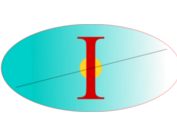Citation:
| ntls.10022.pdf | 1.08 MB |

Abstract:
The trihydrogen ion has a central role in creating complex molecules in the interstellar medium. Therefore, its formation and destruction mechanisms in high photon energy environments involving organic molecules are drawing significant experimental and theoretical attention. Here, we employ a combination of time-resolved ultrafast extreme-ultraviolet pump and near-infrared probe spectroscopy applied to the deuterated CH3OD methanol molecule. Similar to other double-ionization studies, the isotopic labeling reveals two competing pathways for forming trihydrogen: A) H+3 + COH+ and B) H+3 + HCO+. We validate our high-level ab initio nonadiabatic molecular dynamic simulations by showing that it closely reproduces the essential features of the measured kinetic energy release distribution and branching ratios of the two pathways of the deuterated system. The success of ab initio simulation in describing single photon double-ionization allows for an unprecedented peek into the formation pathways for the undeuterated species, beyond present experimental reach. For this case, we find that the kinetic energy release of pathway B shifts to lower energies by more than 0.6 eV due to a dynamical isotope effect. We also determine the mechanism for trihydrogen formation from excited states of the dication and elucidate the isotope effect’s role in the observed dynamics.



